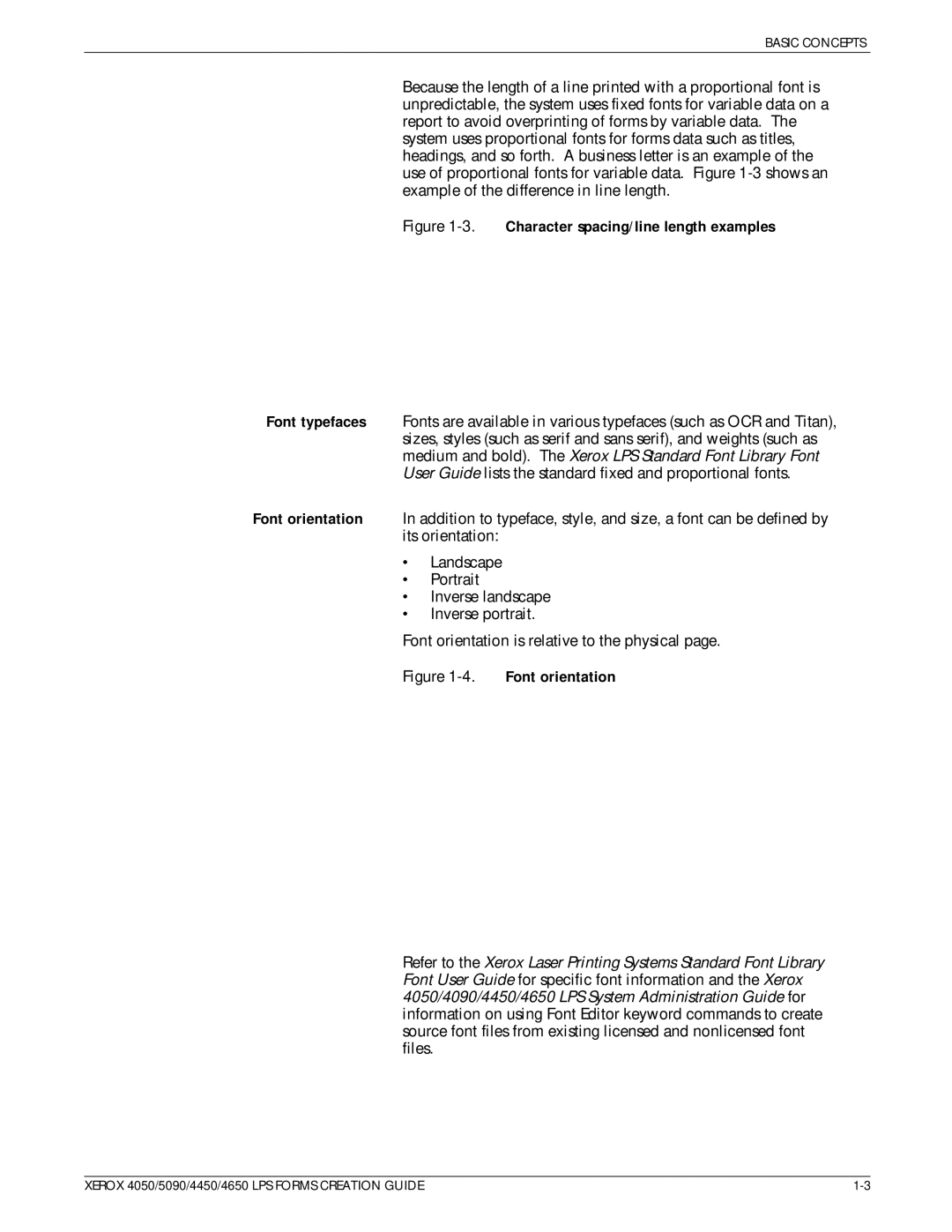
BASIC CONCEPTS
Because the length of a line printed with a proportional font is unpredictable, the system uses fixed fonts for variable data on a report to avoid overprinting of forms by variable data. The system uses proportional fonts for forms data such as titles, headings, and so forth. A business letter is an example of the use of proportional fonts for variable data. Figure
Figure 1-3. Character spacing/line length examples
Font typefaces Fonts are available in various typefaces (such as OCR and Titan), sizes, styles (such as serif and sans serif), and weights (such as medium and bold). The Xerox LPS Standard Font Library Font User Guide lists the standard fixed and proportional fonts.
Font orientation In addition to typeface, style, and size, a font can be defined by its orientation:
·Landscape
·Portrait
·Inverse landscape
·Inverse portrait.
Font orientation is relative to the physical page.
Figure 1-4. Font orientation
Refer to the Xerox Laser Printing Systems Standard Font Library Font User Guide for specific font information and the Xerox 4050/4090/4450/4650 LPS System Administration Guide for information on using Font Editor keyword commands to create source font files from existing licensed and nonlicensed font files.
XEROX 4050/5090/4450/4650 LPS FORMS CREATION GUIDE |
